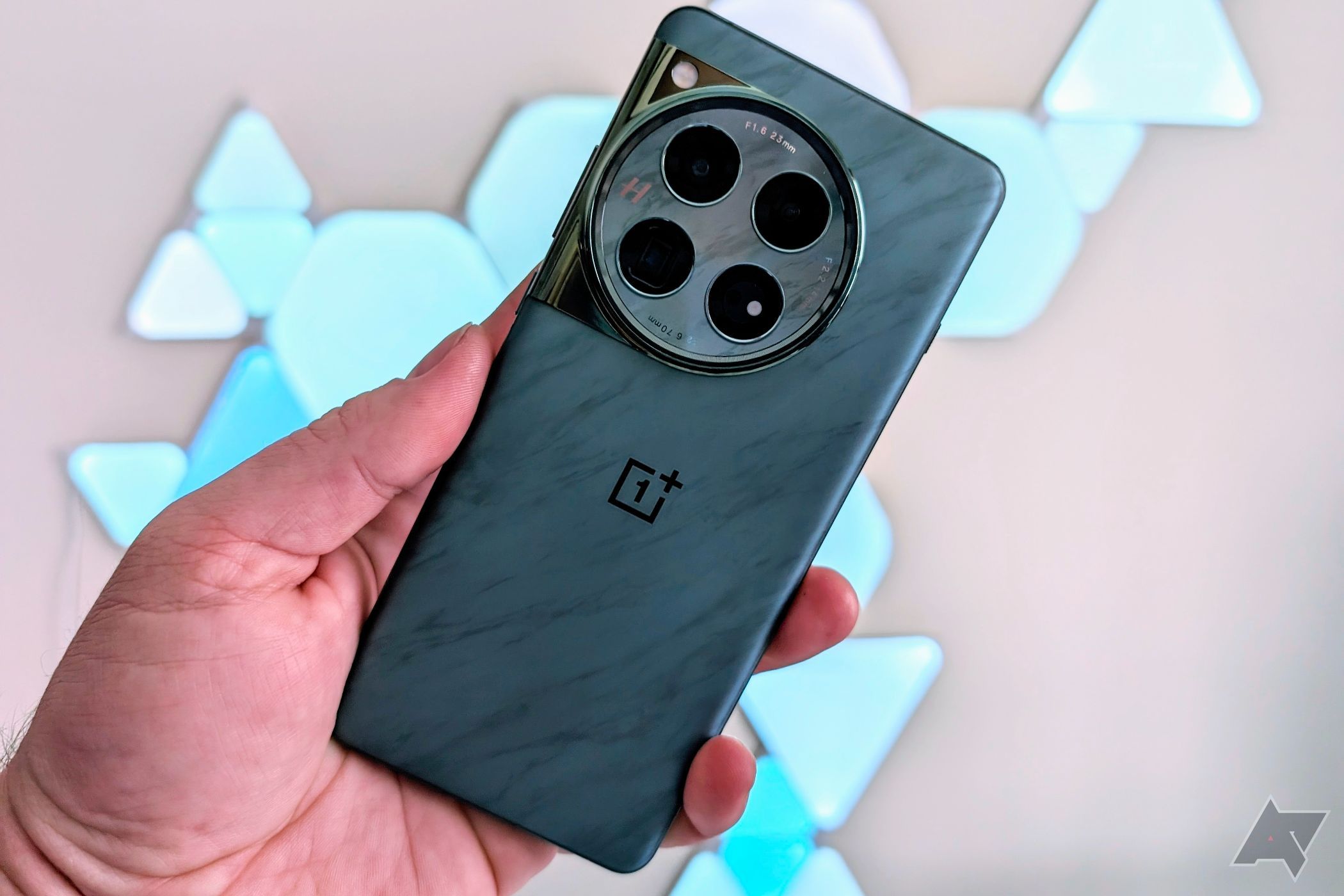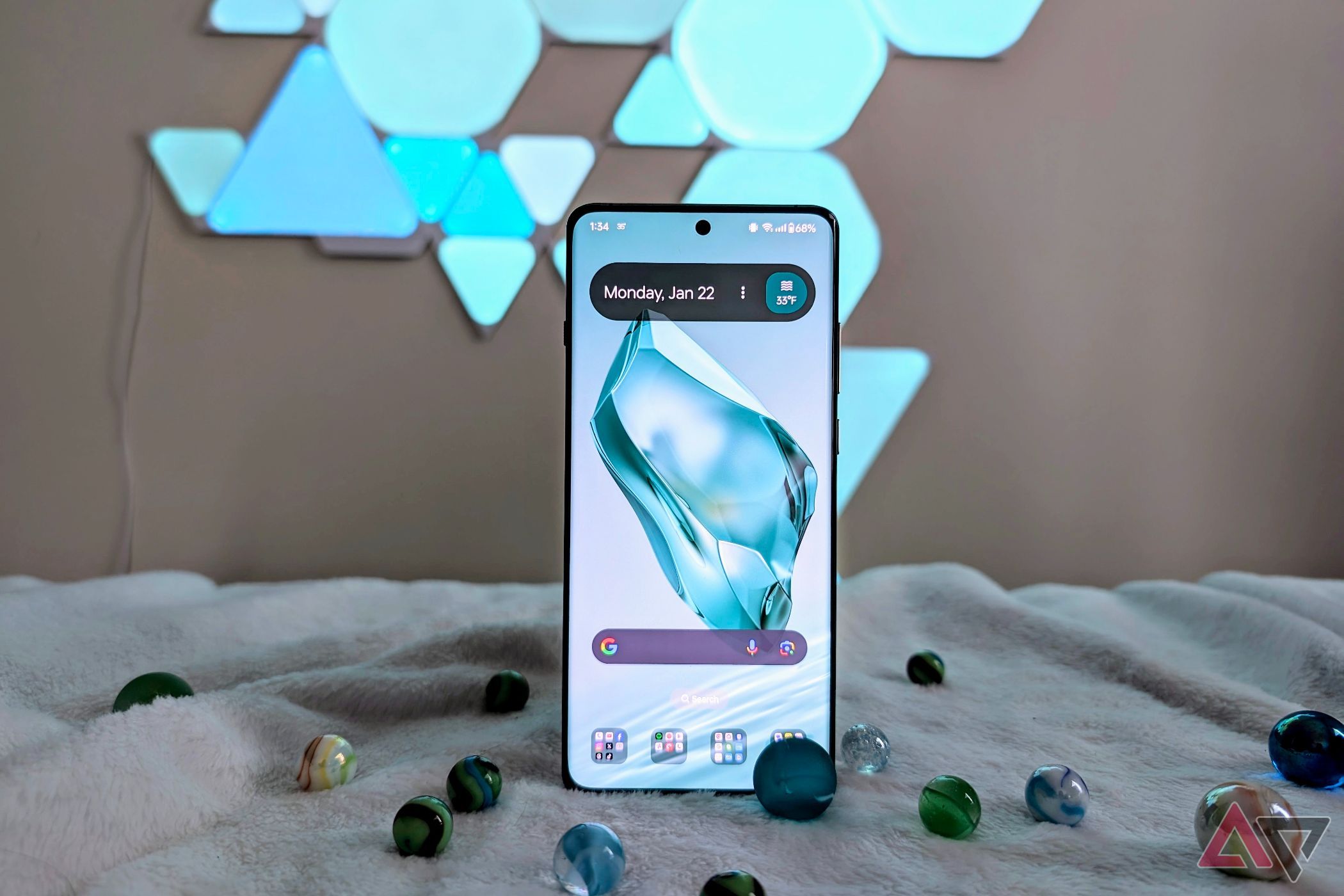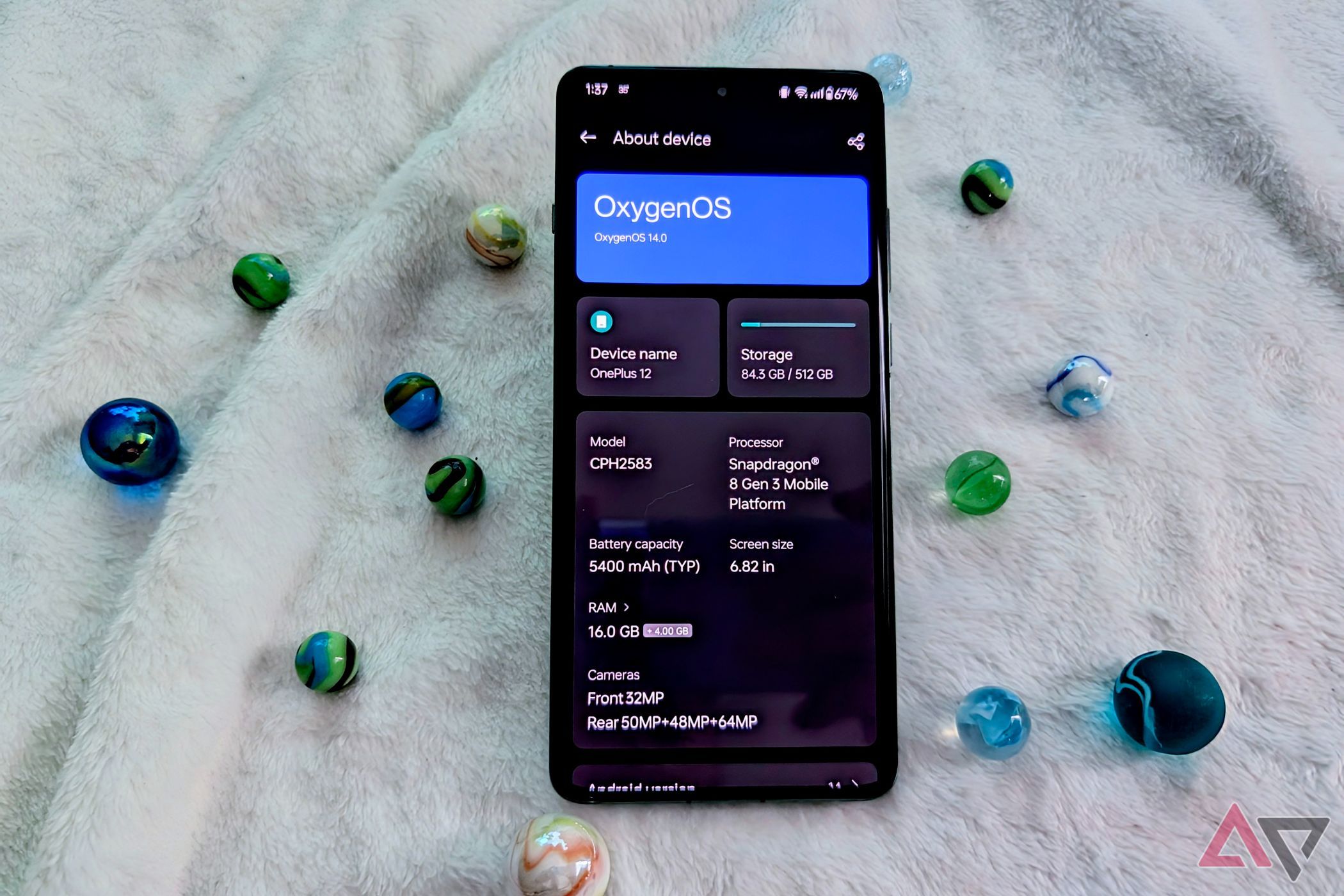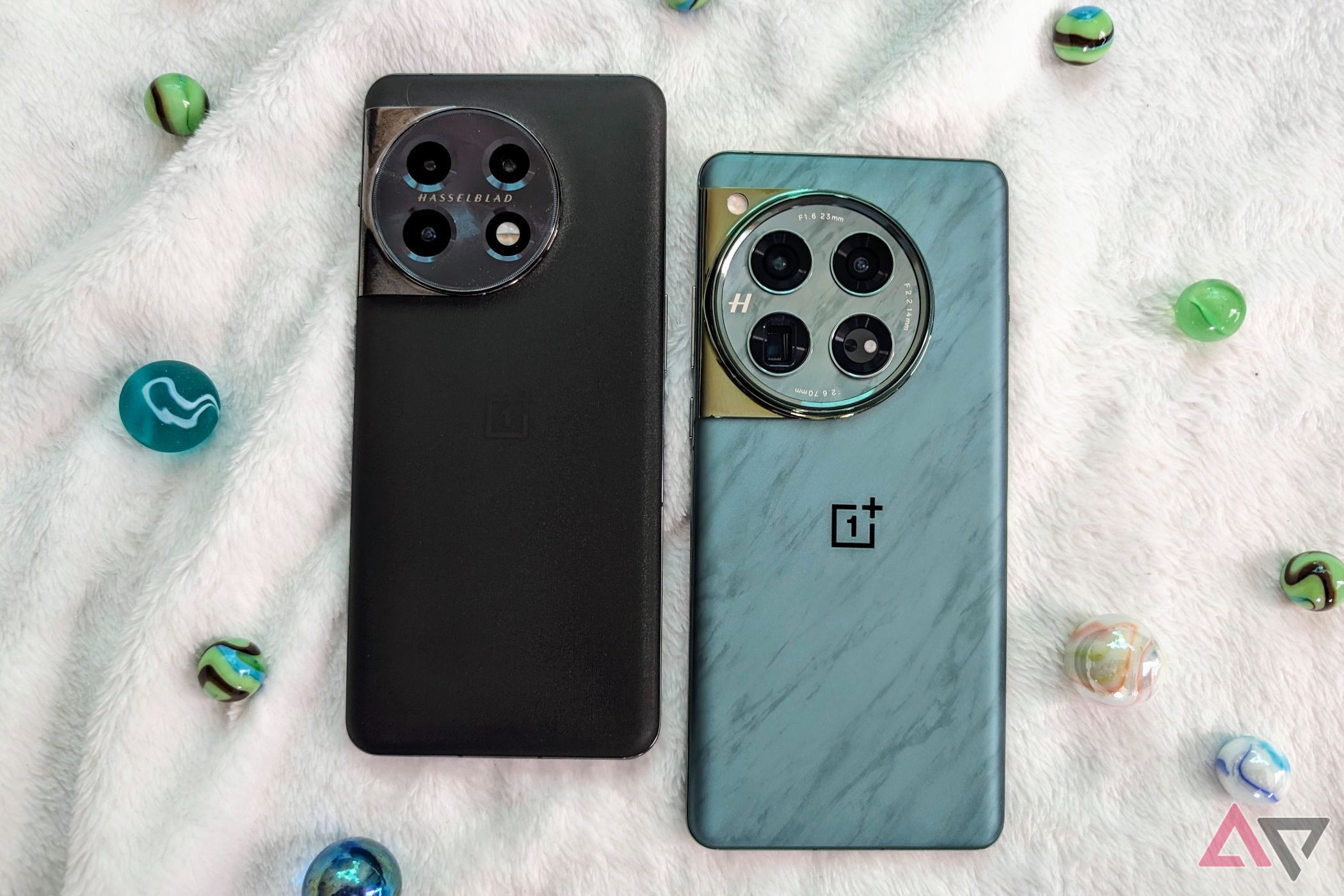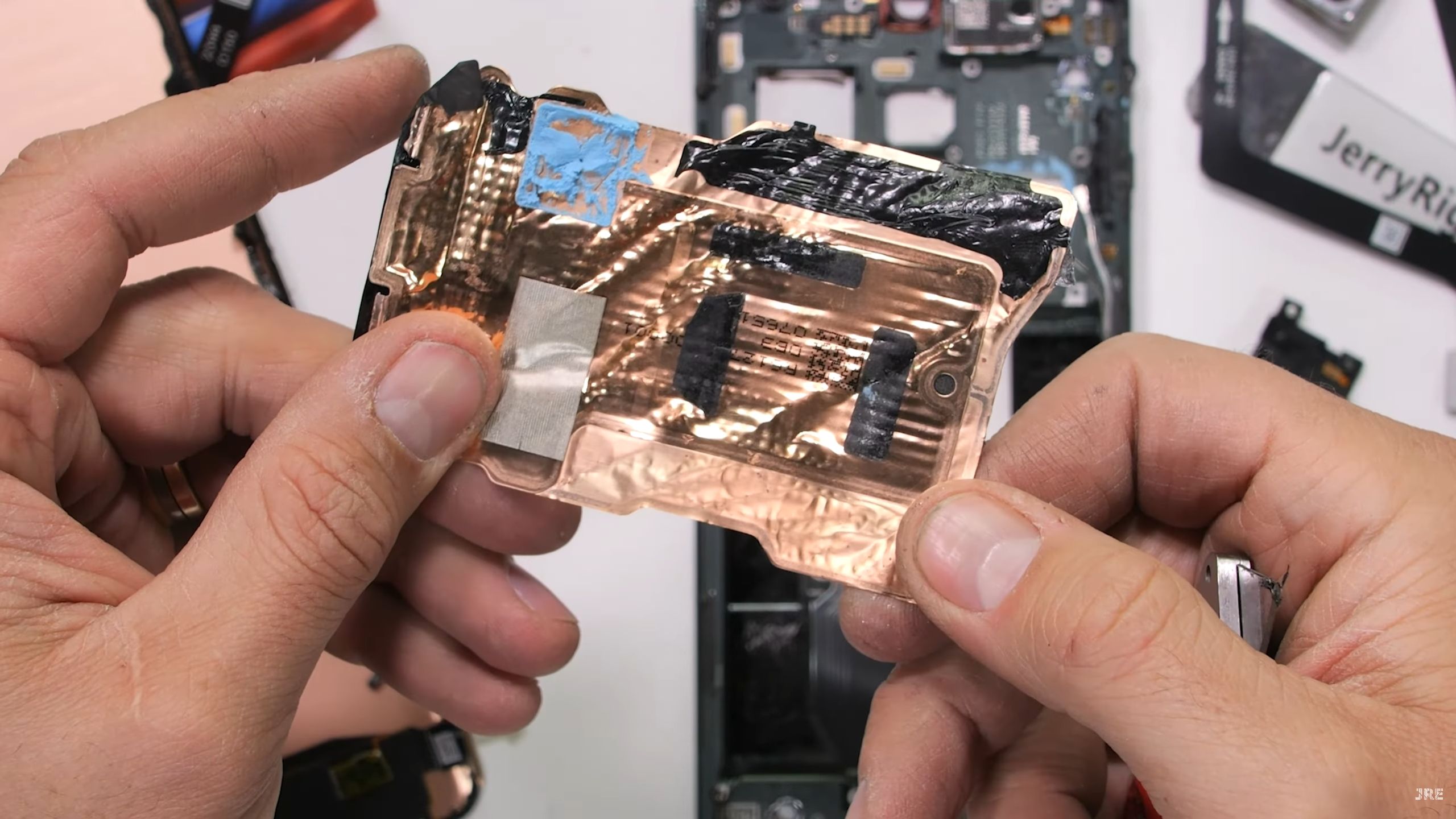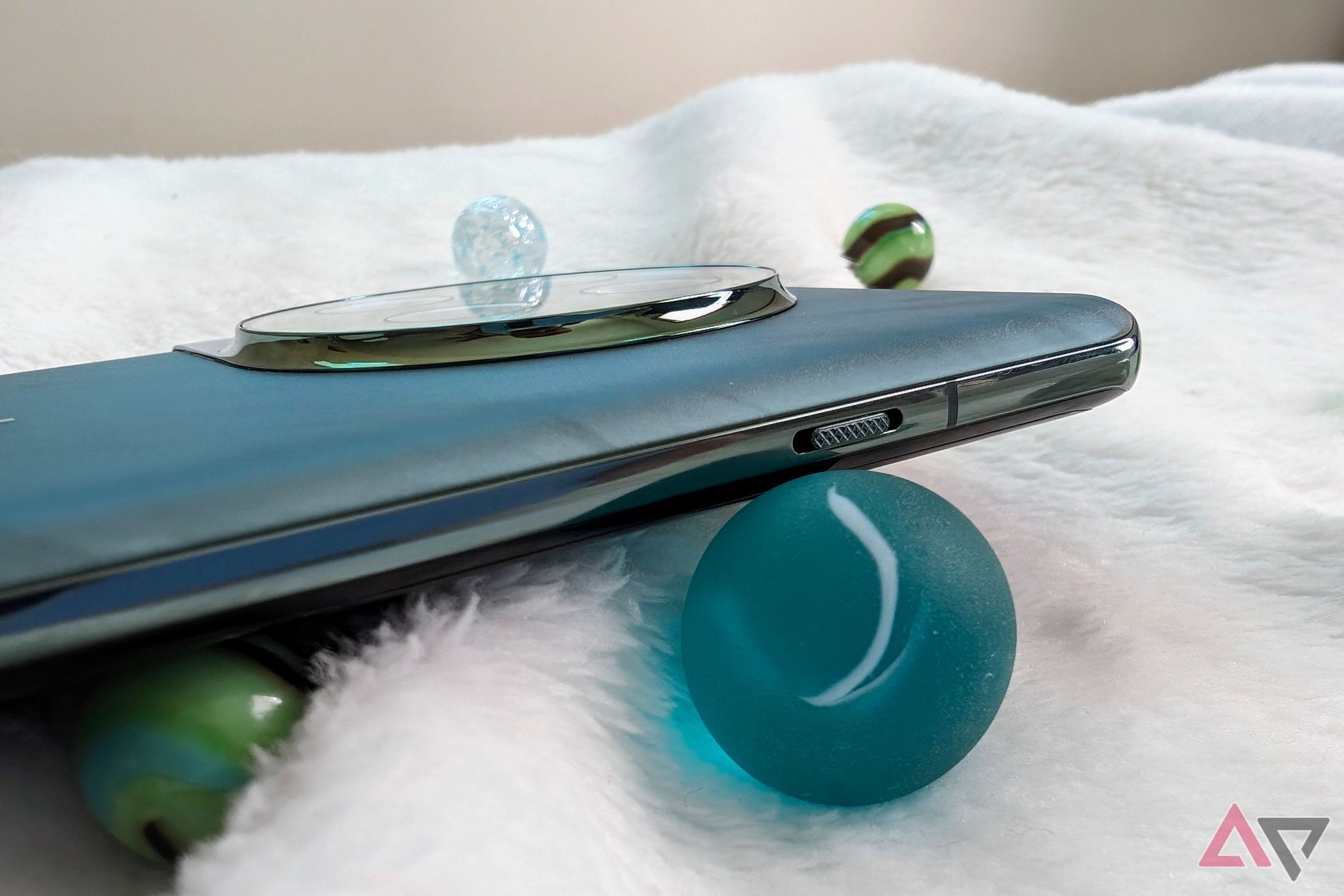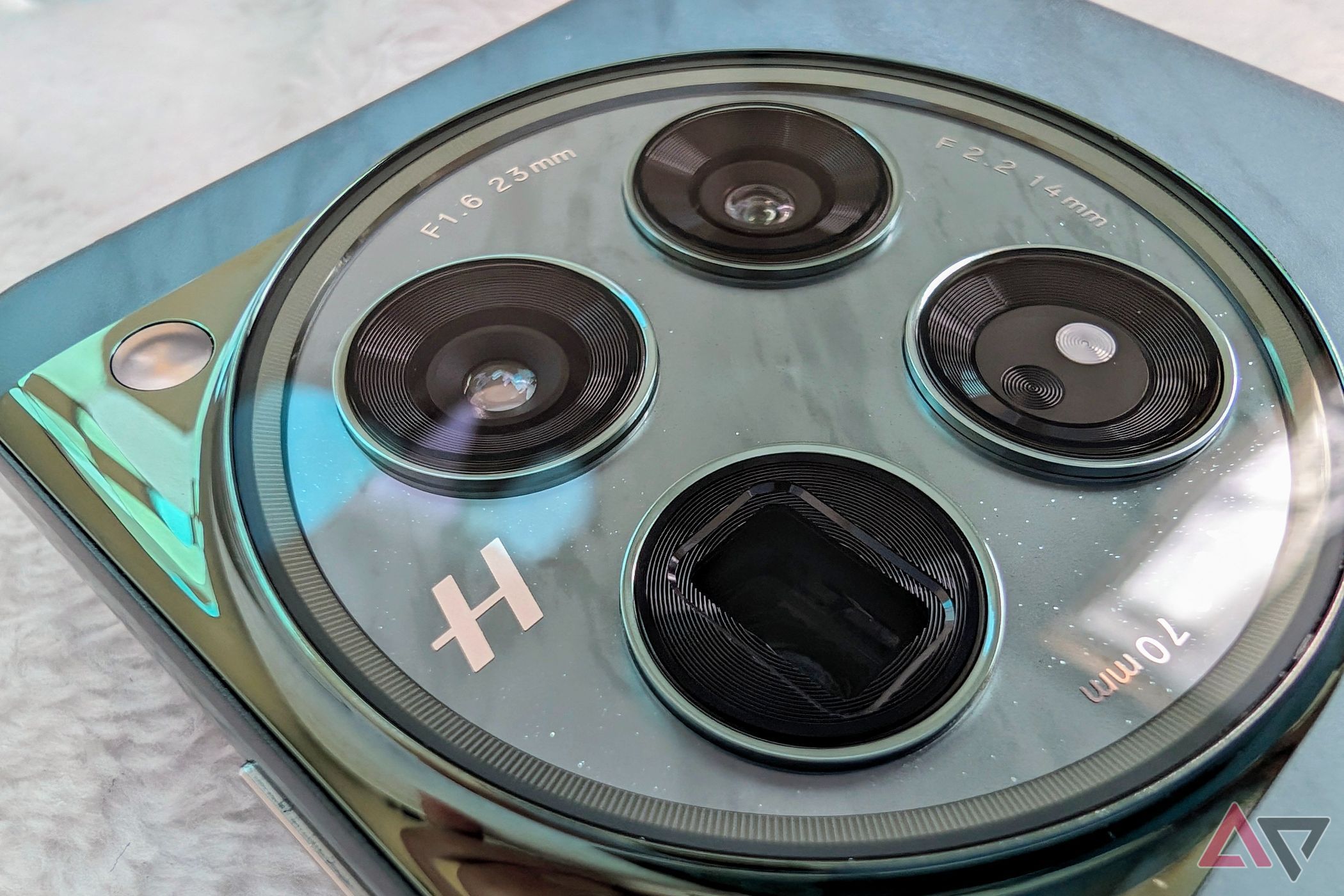-
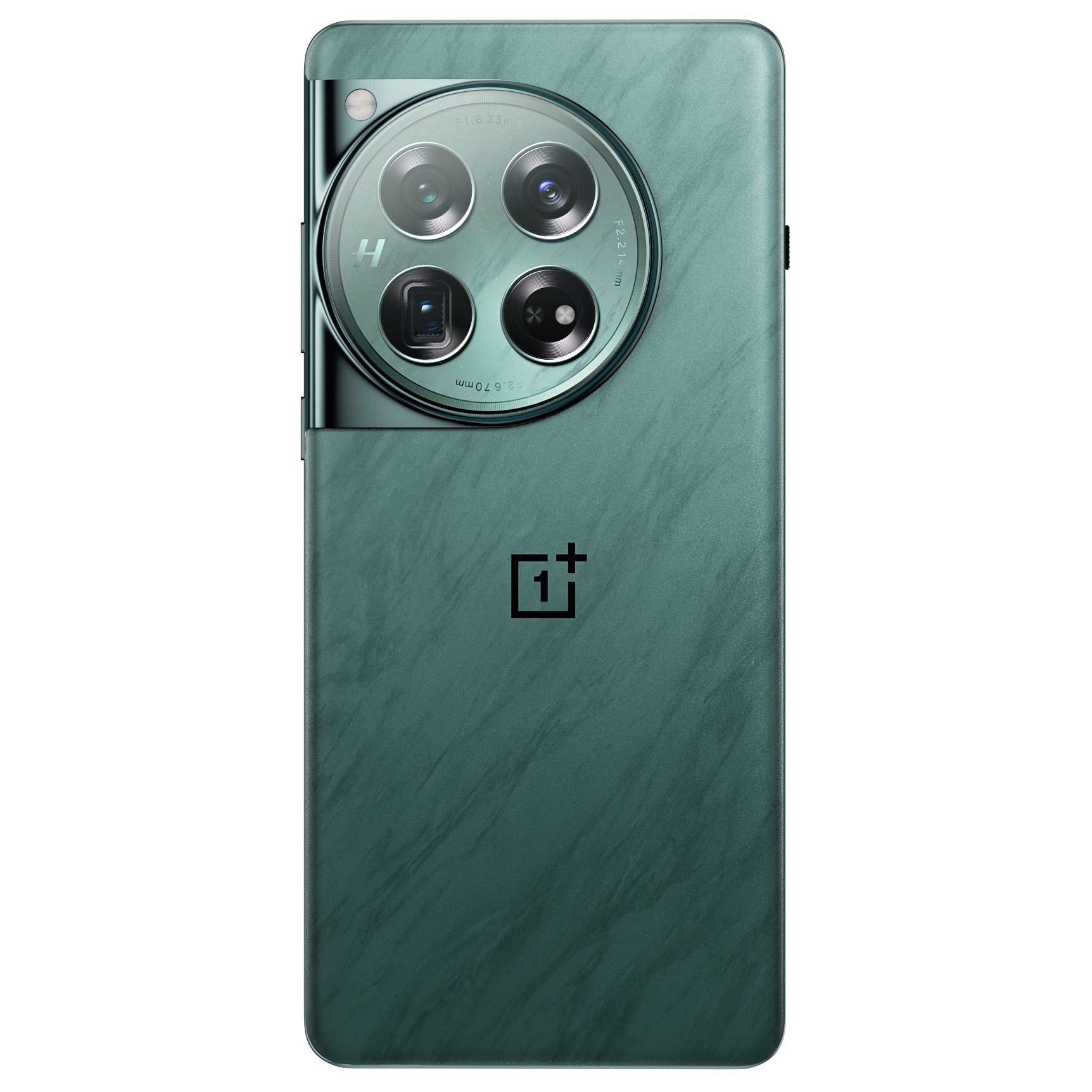
OnePlus 12
Style and substance
$800 $900 Save $100
The OnePlus 12 combines the industry’s best components and outfits them with hardware and software engineering novelties to ensure the reasonably priced flagship runs at incredible speeds for years. Despite lacking the hottest new stuff in AI, it’ll easily compete with the latest high-end flagships.
Pros- Top-notch performance
- Professional-quality camera hardware
- Displays rarely look better
Cons- Limited to IP65 protection
- No carrier tie-ins
-
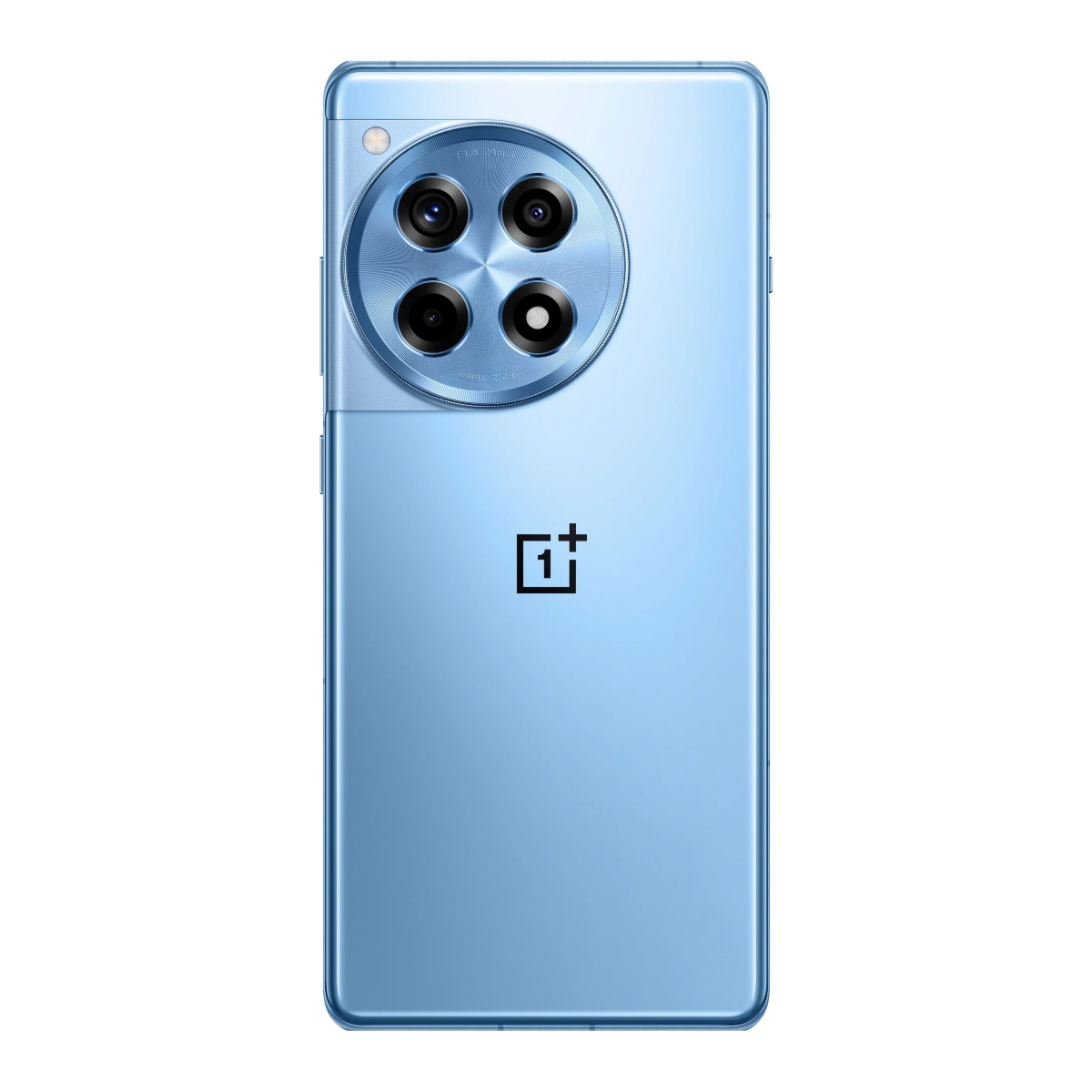
OnePlus 12R
Not gaudy, but effective
It looks similar but fills an entirely different niche to the more expensive model. Instead, the OnePlus 12R aims to take down the rest of the midrange offerings. It sports what would have been flagship-level hardware just last year and excels in every way except premium picture-taking abilities.
Pros- The same fantastic display
- Impeccable battery life, even for a midrange
- Charges faster than almost anything
Cons- Ultrawide and macros lenses stink
- No wireless charging
While a few companies lead the pack in U.S. smartphone sales volume, other manufacturers continue to sneak in with impressive offerings that threaten to shake up the market. Two such phones, the OnePlus 12 and 12R, pack some almost hard-to-believe features (especially in terms of hardware).
While the flagship OnePlus 12 is notably less expensive than its direct competition, the OnePlus 12R makes some further sacrifices to come out as one of the best mid-range handsets we’ve ever seen.
Price, availability, and specs
Announced for the U.S. market on January 23 with February 6 and February 13 launch dates, respectively, the OnePlus 12 and 12R sport lower MSRPs than many similarly equipped phones. At $800, the top-level OnePlus 12 is a borderline steal, and the 12R’s $500 price tag is definitely not too shabby.
The caveat to these great prices is that neither is available tied to any U.S. carriers, so you won’t be able to lower the price via your current provider. Third-party retailer pre-order deals include discounts on upgrades to higher-capacity models, but you might consider buying directly from the manufacturer this time. You’ll get a guaranteed $100 recycling reward for trading in “any phone in any condition” according to OnePlus, which itself is a good deal. Trading in an eligible device can get you up to $700 off the high-end model and $450 off the midrange one, depending on the phone type and its condition.
-
OnePlus 12 OnePlus 12R SoC Qualcomm Snapdragon 8 Gen 3 with CPU-Vitalization Snapdragon 8 Gen 2 RAM 12GB or 16GB LPDDR5X 8GB or 16GB LPDDR5X Storage 256GB or 512GB 128GB or 256GB Battery 5,400mAh 5,500mAh Ports USB-C 3.2 USB-C 2.0 Operating System Android 14 with OxygenOS 14 Android 14 with OxygenOS 14 Front camera 32MP, f/2.4 16MP Rear camera 50MP, f/1.6, OIS main; 48MP, f/2.2 ultrawide; 64MP, f/2.6, OIS, 3x telephoto 50MP, f/1.8 main; 8MP, f/2.2 ultrawide; 2MP, f/2.4 macro Connectivity IR blaster, NFC NFC Dimensions 164.3 x 75.8 x 9.2mm 163.3 x 75.3 x 8.8mm Colors Flowy Emerald, Silky Black Cool Blue, Iron Gray Display type LTPO AMOLED, 120Hz LTPO AMOLED, 120Hz Weight 220g 207g Charge speed 80W wired (100W international), 50W wireless 80W wired (100W international) IP Rating IP65 IP54 Price From $800 From $500 Stylus No No Display dimensions 6.82″, 19.8:9 6.78″, 19.5:9 Display resolution 3168 x 1440 2780 × 1264 Charge options USB-C SuperVOOC wired, AirVOOC wireless USB-C SuperVOOC wired SIM support Dual nano-SIM slot Dual Nano-SIM Cellular connectivity Sub-6 5G, LTE Sub-6 5G, LTE Wi-Fi connectivity Wi-Fi 7 Wi-Fi 7 Bluetooth Bluetooth 5.4 Bluetooth 5.3
Design
Similar to before, but different from the rest
Both phones build on the design language of the OnePlus 11 generation (although the lower-cost R version of that one didn’t make it to the States). This makes for two great-looking devices with curved edges, small corner radii, and a particularly eye-catching puck on the back to house the cameras. The 12R looks fantastic for a midrange phone, especially from the back, and offers a matte gray finish or glossy light blue that gleams beautifully in the light.
The more expensive variant comes with an optional black rear finish nearly indistinguishable from the OnePlus 11, and it looks fine but doesn’t take any risks. The Flowy Emerald colorway that we tested, however, might be a reason to avoid putting a case on your phone. The general green coloration resembles previous OnePlus flagships, but some simple marbling combines with the polished glass to produce a seriously classy sheen. The 12’s polished aluminum frame only serves to highlight the phone’s overall premium appearance.
We have nothing bad to say about either phone, particularly since the 12R beats nearly all its competition in terms of looks. But the 12’s style makes it clear that OnePlus is trying to stand out from other leading phones, and in our eyes, it works.
Display
Wear your sunglasses
The display is the smallest trade-off that OnePlus made to get one of these phones cheaper than the other. Let’s start with the minor differences. The high-end 12’s ever-so-slightly taller panel has a 60ppi higher pixel density, resulting in one of the most crisp outputs we’ve laid eyes on. But the phones’ screens share the rest of the good news.
To be clear, you won’t be staring at the eye-poppingly-high 4,500-nits peak brightness for more than a moment at any point — which is a good thing because that might not even be safe. Instead, you’ll get 1,600 nits out of high brightness mode, much more in line with the rest of the pack and easily usable in direct sunlight.
Rather than blind you, the absurdly high peak brightness delivers one of the most effective HDR presentations yet on a mobile device. And we’re not just talking about the less-than-perfect HDR10+ that some competitors (like the Galaxy S24 family) limit themselves to. Both the 12 and 12R support full-on Dolby Digital-encoded media, all but ensuring an unnecessarily great experience when viewing supported media. Do you need cinema-quality dynamic contrast on your phone? Maybe not, but it looks incredible.
Software
Improving (slowly for now), but much better than the past
OnePlus software has presented some frustrating issues in the past, but even last year’s OnePlus 11 smoothed over most of the issues. The new experience falls very closely in line with that, making the operating system easy to set up and ensuring nearly all apps work quickly and comfortably from the get-go. A few subtle options are missing that most other Android phones offer, but it’s reasonably intuitive, relatively close to stock, and not difficult to customize much of the OS. What specialized functions do exist can usually be easily disabled if they’re a bother.
We noticed a bit of a learning curve when we reviewed the OnePlus Open, surprising us as it’s arguably the best foldable yet. So we knew a bit about what to expect from the 12 and 12R, which offer nearly identical software layouts. But with both the recent OnePlus releases, we didn’t have any issues navigating those early struggles and falling into step with the company’s interface. So, while it’s not quite as customizable as OneUI or as guided and streamlined as Pixel UI, OxygenOS is no reason to avoid either OnePlus phone.
OnePlus has promised 4 and 5 years of Android and security updates, respectively, which was the standard among industry leaders until very recently. We’d love to see a few more years, especially given the hardware we’re about to talk about, but most flagship owners don’t hold onto their devices for longer than that, anyway.
Performance
One barn-burner and one really fast phone
OnePlus packed some of the most ridiculously powerful hardware possible into the high-end 12, including the Snapdragon 8 Gen 3 system-on-a-chip, up to 16GB of RAM (which was 24GB internationally, in fact), and UFS 4.0 storage (even though it really won’t make a difference on a smartphone). This results in one of the fastest phones on the market, hands down. It ensures blazing-fast general use, app operation, and gaming and also promises to keep the camera taking instantaneous snaps.
So let’s not call the 12R’s differences a sacrifice, but more of a compromise. Remember, this is a $500 phone we’re talking about. Its Snapdragon 8 Gen 2 will easily hold up throughout the device’s 4-year Android update lifespan, and you can even upgrade the 12R from 8 to 16GB of RAM if you choose the 256GB model. It’ll handily manage your favorite games at good detail levels and 60 FPS, at least. And as far as day-to-day use, you might not even notice the downgrade compared to its older sibling.
Source: JerryRigEverything/YouTube
And if the actual hardware capability isn’t enough, know that the manufacturer went to great lengths to minimize both phones’ risks of overheating and throttling. Inside, a massive, dual-layer vapor chamber provides some of the most impressive cooling on a smartphone to date. It doesn’t just focus on the CPU cores, either, with a conductive mesh, copper heat sink, and two vapor compartments combined to draw the heat away from all the sensitive bits as quickly as possible. One interesting offshoot here is that you might notice the phone getting warm during heavy use, but make no mistake, that’s on purpose. These beasts are built to run.
Battery life
The best gets better
The OnePlus 11 topped our list of the best phones for battery life, able to last for two days of moderate use regularly. The new flagship checks in with an extra 400mAh of battery storage — or nearly 10% bigger — and the Snapdragon 8 Gen 3 has some (although minor) improvements to efficiency. Plus, the unmatched cooling certainly won’t hurt power consumption.
But the OnePlus 12 also adds what the company calls CPU-Vitalization this time around, a proprietary software layer specifically engineered to manage tasks perfectly to provide power or efficiency when they’re needed most. We’re hoping to snag a different high-end device with an identical Qualcomm chipset to objectively measure how this system works (since the Galaxy S24 family uses an overclocked, specialty chip), but so far, battery life on the OnePlus 12 has been fantastic. That’s a big win because these early review periods tend to tax batteries considerably more heavily than long-term, daily use does.
The 12R doesn’t see any huge battery disadvantages, and in fact sports 100mAh more capacity than its costlier mate. That’s ostensibly to offset the slightly less efficient Snapdragon Gen 2 SoC, but again, it’s still a full 10% bigger than the OnePlus 11’s. Suffice it to say, you might actually see both of these in our next roundup of marathon-running phone batteries.
Nobody charges phones like Oppo
OnePlus and its parent company release the fastest-charging phones in the world. They charge so quickly that they’re actually limited by U.S. power infrastructure rather than the charger or phone itself. That’s right; international versions of the 12 and 12R can charge at faster peak rates of 100W (compared to 80W in the U.S. market) simply because you can plug them into higher wattages at the wall.
Does anybody need 100W charging? Honestly, probably not, but SuperVOOC can do it. Heck, do you really need 80W and the ability to go from empty to full in about 30 minutes? Still, maybe not, but it (along with the otherwise fantastic battery life) essentially guarantees you’ll never accidentally run out with either the OnePlus 12 or 12R.
“But,” you might contest, “I don’t feel like shelling out an extra $50 for OnePlus’s special charger.” Good news: OnePlus has done the unthinkable and included the 80W adapter in the box with both 2024 OnePlus offerings. Amazing.
While both use identical SuperVOOC wired charging, the 12R does lack wireless charging. That’s in contrast to the 12’s 50W wireless capability, for which you must get a separate charger (although pre-order deals do net you a free one). But let’s be honest, if you can refuel from a dead battery to a full one in just a half-hour, how often will wireless charging even come into the picture?
Camera
Hasselblad-tuned performance — in one case only
Get those buzzwords out of here — it’s not real AI, anyway. OnePlus has opted to partner with the renowned photography wizards at Swedish manufacturer Hasselblad to deliver some of the most capable imaging hardware yet. It doesn’t just lend credence to the phone’s camera effectiveness, it’s resulted in a pleasing, dare we say great photo and video experience for OnePlus’ last few releases.
Specs, of course, are far from the whole story, but the OnePlus 12 has good ones in droves. Plenty of megapixels, above-average pixel widths, high f-stops, and importantly, vast arrays of modes and options. The ultrawide’s great, capturing native 50MP images (typically binned to 12.5MP), while the primary sensor picks up nearly film-grade photos, especially in terms of depth of field and light balance. Then there’s the telephoto lens, offering 3× optical zoom (including optical image stabilization) and a whopping 64MP of data. Early results indicate its long-distance photography is every bit as good as Samsung’s, and approaches Google’s even without any fancy machine learning tricks.
Unfortunately, the OnePlus 12R doesn’t come with such good news. Let’s just say, its cameras exist. The primary lens does fine for general use and will undoubtedly leave you with plenty of great-looking social media shots. But it’s an entirely different configuration, with fewer, smaller pixels and a less-advanced autofocus system. The ultrawide lens will take OK landscapes in the hands of a talented point-and-shooter, but the 2MP macro lens pretty much just exists, and that’s about it. Hasselblad was not involved in the OnePlus 12R’s cameras, and that shows. But if you only need the cameras for casual use, then who cares, right?
There’s a gap between the selfie cameras, too, although it’s not quite as pronounced. The 12 captures your beautiful face at 32MP and the 12R at half that, with both binned down to 8MP. So the cheaper phone takes passable selfies, but the more expensive one will perform better in all conditions, especially with low light.
Which one’s right for you?
Despite similar looks, these are very different phones — but they’re both still great. The OnePlus 12’s $800 MSRP marks a significant advantage over the competing and almost identically sized Galaxy S24+ and Pixel 8 Pro. In terms of performance, it may well actually beat both. And despite its lack of fancy-schmancy AI tools, a talented photographer can even eke out professional-grade photos. If you’re not sold on the hype of more popular flagships, you can’t go wrong with the OnePlus 12.

OnePlus 12
Best overall
One of the best-performing smartphones ever
$800 $900 Save $100
OnePlus went all out in outfitting its 12 flagship with great hardware and novel engineering like a vast vapor chamber and thoughtful software inclusions like CPU-Vitalization to improve its already great efficiency. We’re sure to be talking about this one for months to come or longer.
But that’s not to say that nobody should get the OnePlus 12R. In reality, these phones don’t compete much with each other. The hardware compromises on the 12R are only noticeable by the most demanding users with a good amount of cutting-edge flagship experience. And it’s only a $500 list price, which could drop considerably out the door thanks to sales and trade-ins. It’s early in 2024, but we already have a contender for the best midrange phone of the year.

OnePlus 12R
Great value
Sure looks and feels like a flagship
Don’t let the price fool you; The OnePlus 12R would’ve stood its ground against some of last year’s flagships without difficulty. As long as you’re not dead-set on premium camera performance, this midranger has few drawbacks for something in its price class.
Source link

